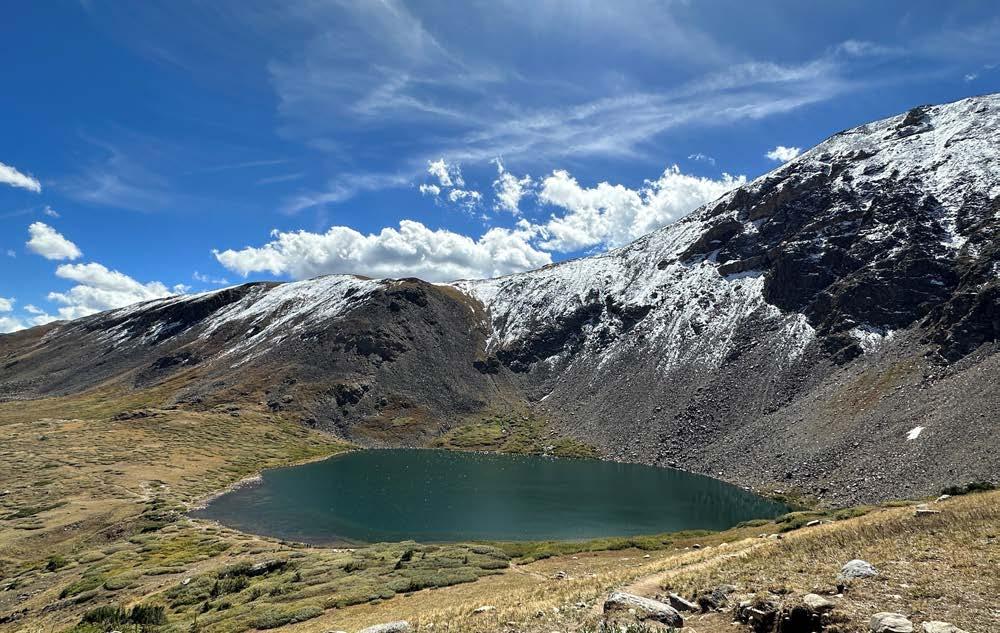
“WRA continues to successfully facilitate partnerships with stakeholders throughout the West to help move towards a healthy future.”



“WRA continues to successfully facilitate partnerships with stakeholders throughout the West to help move towards a healthy future.”

Navigating an election year can feel like trying to find your way in the dark – confusing, a little frightening, and seemingly endless. With our busy lives and responsibilities, it can be daunting to understand each candidate’s positions and policies on climate change. It’s hard to know what will make a difference in the daily news of droughts, wildfires, environmental injustice, and air pollution. Many also feel disheartened by a perceived lack of progress when it comes to the climate crisis and often feel ready to give up.
That’s where we can help.
At WRA, we’re charting the path forward to actionable climate solutions. We’re here for our communities with the expertise and tenacity to provide a guiding light to a brighter climate future.
We have a different perspective from the doom and gloom that people often hear when it comes to the climate crisis. Solving this challenge is going to take courage, resolution, and the belief that we can create a better future. And we believe we can. Why are we so hopeful? The big secret that you don’t often hear is that we are making substantial progress in our work to address climate change.
We’re hopeful because we see the progress we have already made:
8M Acres
$400M
100M+ Tons
of land protected in the last 3 years.
invested in transportation electrification.
in avoided annual greenhouse gas pollution.
Big Thompson River, Colorado. Paul Lander, donor from ColoradoThe policies being passed today will secure a bright climate future for generations to come.

And we know that more is possible.
We’re hopeful because a broad range of Americans across demographics and the political spectrum are on board. Two thirds of voters support 100% renewable energy by 2035. Additionally, an overwhelming majority of people living in the West support protecting 30% of our land by 2030 and believe that we need to take urgent action to protect our water sources.
We know exactly what the challenges are before us – we know that we must cut climate-warming emissions by at least 50% by 2030 and close to 100% by 2050. We know that we must use 25% less water across the West and protect the Colorado River and other key rivers. We know that we must protect 30% of the West’s land and habitat by 2030.
We are hopeful because we know that solutions are possible, and we’re winning in decision making venues across the West.
This election cycle, WRA will demonstrate that climate wins in our region are already making a difference – and we will help light the path for ways that you can get involved to create a more hopeful future.
The opposite of climate despair is climate action. There are many things that people can do to hold
those in power accountable and to support long-term, institutional change.
Voting for policymakers who support climate values, sending an email to your state representative, showing up to a local town council meeting, or donating to organizations who are driving climate action can make the difference between whether we continue the status quo or build a brighter climate future.
Together, our advocacy is powerful. You’ll see in this edition how advocates in New Mexico changed the trajectory of a policy decision by showing up and making their voices heard. If it wasn’t for the hundreds of community members who attended hearings, reached out to decision makers, and submitted comments to the air quality boards, it would have been impossible to pass new clean cars and trucks standards that will ensure clean air and equitable access to electric vehicles.
One of the most impactful ways to get involved is by taking the most fundamental action we can take in a democracy: voting. Did you know that local representatives, state elected officials, statewide ballot measures, and state commissions play a major role in solving climate change? In many states, elected and appointed commissions approve and oversee regulations that affect critical issues like our air quality, the price of our electricity bills, the availability and affordability of zero-emissions cars and trucks, and are how we hold utility companies accountable.
Our local and statewide representatives have the power to decide on issues like whether our communities are water-wise and adopt climate-resilient development, and whether our states have enough funding to protect our public lands and make them accessible to all. Voting “down ballot” in state and local elections, in addition to participating in federal elections, demonstrates your engagement in the forums where critical decision making that affects our everyday lives takes place.
To spark this advocacy and our success, we’re asking you to take our Bright Climate Future pledge as a commitment to leveraging this important election year to create a sustainable and resilient future for the West. We have an opportunity to continue our climate momentum, but to win, everyone must join in the effort.
We’ll be sharing resources throughout the year on how to fulfill your pledge and make a brighter climate future a reality:
• Learn about the solutions and actions that will create a brighter climate future in the West.
• Find out who your representatives are and how to contact them.
• Learn about the power of public comment and how your advocacy can make a difference in decision-making processes.
• Make a voting plan based on key environmental issues affecting your state and community.
• Learn why voting in all the elections on the ballot matters when it comes to climate solutions.
By building policy solutions that address difficult environmental problems and collaborating with diverse groups, we are tackling our region’s most pressing challenges. We are successfully reducing carbon emissions, safeguarding rivers, and redefining how land for our wildlife and communities is protected and connected.
The policy seeds that we plant today will grow into the bright climate future of tomorrow, and it’s critical that we start now. By taking advantage of one of our most time-honored democratic processes, we can generate more energy for our solutions and a brighter future.
“The problems we have to tackle to address climate change require meaningful solutions that will last, which
is why WRA’s approach and our individual engagement is so important.”
Allie Anderson, donor from Colorado Teton Range, Wyoming.
Teton Range, Wyoming.
In 2024, WRA is shining a light on climate solutions and planting the seeds for a brighter climate future.
Actions today determine the future, and every little bit we do matters. Every drop of water saved, every particle of pollution removed from our air, and every square foot of land protected will impact our communities and ecosystems for the better.
During this important election year, we’re not giving up, and we’re not going to let our leaders give up either. Neither should you.
We invite you to take WRA’s Bright Climate Future pledge. This pledge is a commitment to leveraging this important election year to create a sustainable and resilient future for the West.
Belief in a Bright Climate Future: I pledge to share the hopefulness of climate solutions and do what I can to support them.
Knowledge is Power: I pledge to learn who my local and state representatives are and where they stand on climate issues like water conservation, land protection, and renewable energy. I pledge to learn more about key environmental issues and initiatives happening in my region.
Use My Voice: I pledge to send an email, sign an action alert, or attend a meeting and give public comment on a local environmental issue that matters to me.
Vote Locally: I pledge to vote in the federal, state, and local races for elected officials who represent my environmental values.
As a thank you for taking the pledge and a sign of your commitment to a Bright Climate Future, WRA will send you a complimentary lightbulb pin. This lightbulb pin is meant to be a symbol of hope and a reminder of the policies being passed today that will bloom into the bright climate future of tomorrow.



Joan Leatherbury’s watercolor paintings reflect the majesty of nature that she loved: idyllic mountain scenes, colorful aspen groves, horses grazing in peaceful meadows. She found peace and solace in nature and animals, as embodied in her intentional colors and brushstrokes.
Joan’s love of the outdoors and horses began in Virginia in her youth. After she graduated from college, her career led her from New York to San Francisco to Woods Hole, Massachusetts, and finally, to Aspen, Colorado, in the ’60s, where she stayed until her death at the age of 93. Art and landscapes discovered from traveling adventures near and far continually inspired her paintings.
Joan held various positions at the Aspen Institute for Humanistic Studies and the Given Institute, part of the University of Colorado’s School of Medicine, which focused on the emerging field of biomedical research. As the region changed over the decades, she stayed because the Roaring Fork Valley was ideal for horseback riding and had mountains perfect for skiing. Over the years, she housed her horses at many of the local ranches and was a frequent visitor to Carbondale’s Strang Ranch. Her enthusiastic spirit kept her skiing until the age of 87, with a preference for harder runs because there were fewer people on them.
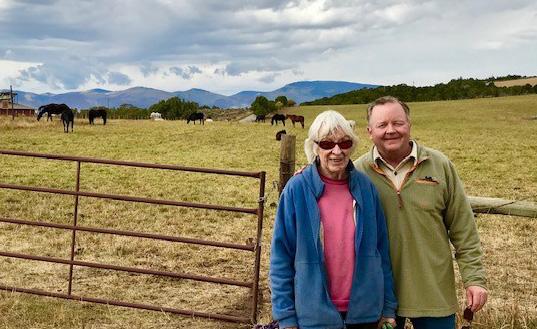

When Joan passed away last May, she left a generous planned gift to WRA – her first donation to the organization. She worked with her professional advisor to incorporate estate gifts to a handful of nonprofits whose missions aligned with her values and interests. Her thoughtful foresight perpetuates her values by preserving the beauty of nature.
“Joan was very conscious about what was going on in the world. She had seen Aspen change so much in her time there and talked a lot about preserving things,” shared Christopher Gagen, her nephew. Christopher and his wife, Patricia, were lucky enough to make many visits to Aspen to see Joan and witness firsthand her deep connection to the place she called home.
One of her final requests was to have her ashes scattered in a nature reserve
in Aspen, forever returning to the land she loved. Her paintings were gifted to her friends, family, and caregivers, who can enjoy a peaceful respite from everyday life through Joan’s beautiful view of the world.
We are grateful to name Joan as a member of the 1989 Legacy Society, which honors donors
who make a planned gift to WRA. Joan’s gift will go far to protect the unparalleled landscapes, critical waterways, and spirit of the region that was close to her heart. If you are passionate about protecting the treasures of the West for future generations, a planned gift is among the most personal and meaningful ways to give.
Questions about making a planned gift to WRA? Please contact Theresa Bushman at 720.763.3727 or theresa.bushman@westernresources.org. Notifying WRA of a planned gift qualifies donors for membership in the 1989 Legacy Society and ensures your gift is stewarded appropriately.
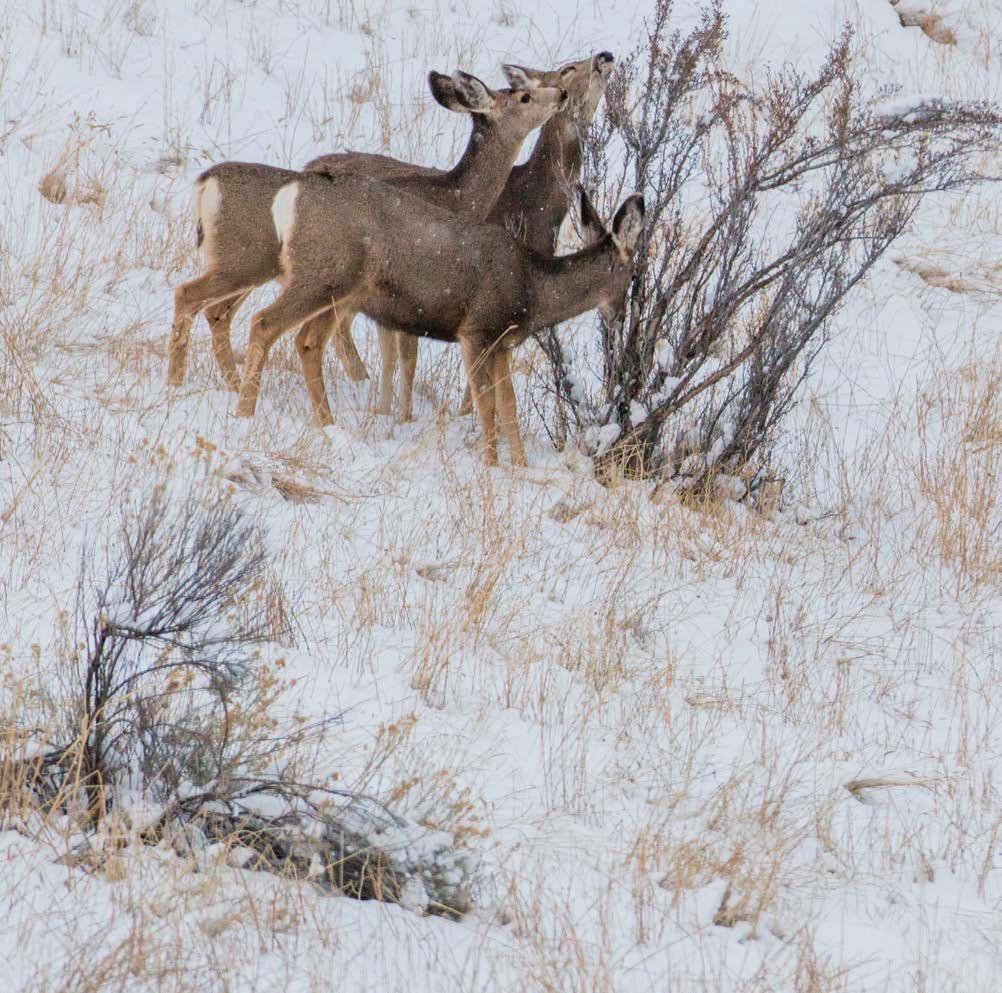
Did you know that thousands of companies match donations made by their employees?
Find out if your company will match your gift to WRA by scanning the QR code below and searching for your company’s name. If they offer a matching gift program, you’ll be provided with the necessary information to complete a simple request.

Our sponsors are securing a bright climate future in the West. We are grateful for their partnership in solving the region’s most pressing issues of today and tomorrow.
Impact Sponsor


Premier Sponsors


Signature Sponsors




Supporting Sponsors





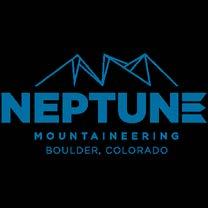



Other Loyal Partners


With sadness and gratitude, we remember Jill Soffer, who passed away at 64 last October in Carbondale – the place she built her home and life after forming a deep connection with the Roaring Fork Valley in her youth. Jill was a Colorado-based philanthropist and passionate WRA donor focused on climate action.
A commitment to environmentalism was the through line in her professional, creative, and philanthropic pursuits. After college, she worked as an interior designer and LEED developer of sustainable homes in California. She later founded Our Part, a foundation focused on fighting the climate crisis and protecting democracy for all. Jill also launched Banking for Climate, a network of high-net-worth individuals pressuring their banks to stop funding fossil fuel expansion. Using real estate as another giving tool, she dedicated significant acreage of her own land as a conservation easement – forever protecting it for wildlife and future generations.

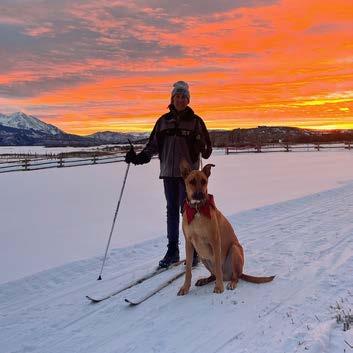
In 2018, Jill was the first donor to support the Climate Fix – WRA’s initiative to decarbonize the power sector across the Interior West and to reduce greenhouse gas emissions consistent with climate science.
“Jill’s early and significant support inspired others to join us and compounded into extraordinary progress. It was an honor to have her as a partner and to share the progress she helped launch. Jill was generous – and a true climate warrior who led with conviction and heart. I feel lucky to have had her support and her friendship.”
Jon Goldin-Dubois, president, WRA
Jill modeled a life of small and large actions that are collectively leading to a brighter climate future.
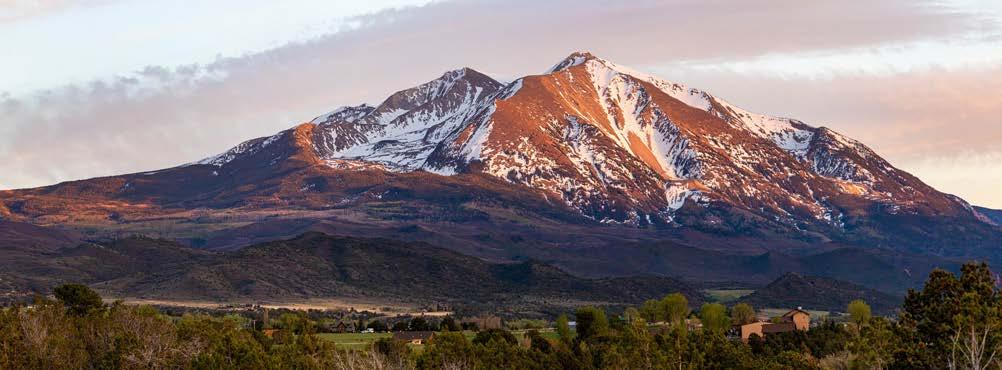
In WRA’s seven-state region, transportation is the second-largest source of emissions behind the electric power sector. Our strategies to decarbonize the electric sector and electrify transportation will tackle 66% of the region’s total emissions – making transportation electrification a key strategy in the fight to avoid the worst impacts of climate change.
Aaron Kressig, transportation electrification manager, and Deborah Kapiloff, transportation electrification policy advisor, are leading the way as we navigate the policy work needed to advance the clean transportation movement in the West.
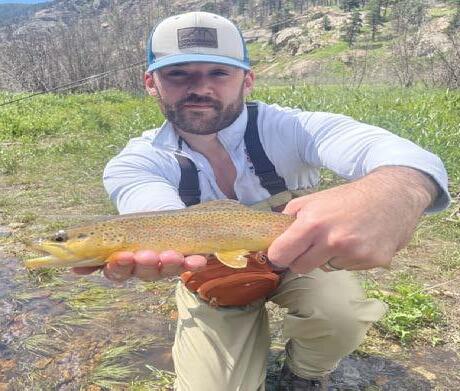
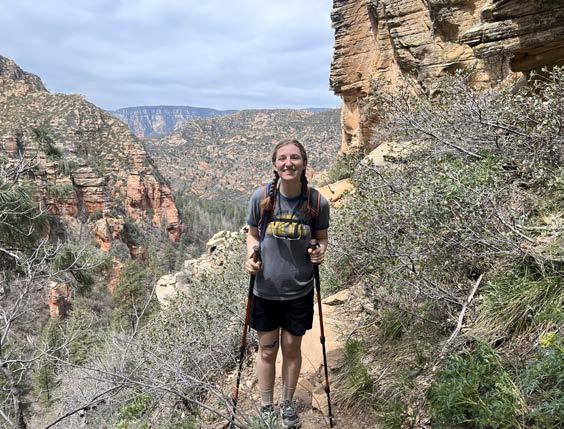
What inspired you to pursue a career in clean energy policy?
DK: Even as a child, I knew I wanted to go into environmental work. My dream job through elementary school was to be a regulator at the EPA. During college in Minnesota, I got more involved with activism, especially the movement against building the Dakota Access and Line 3 pipelines. These experiences cemented in me the need to stop building new fossil fuel infrastructure that would be used for decades and lock in devastating climate change and environmental impacts.
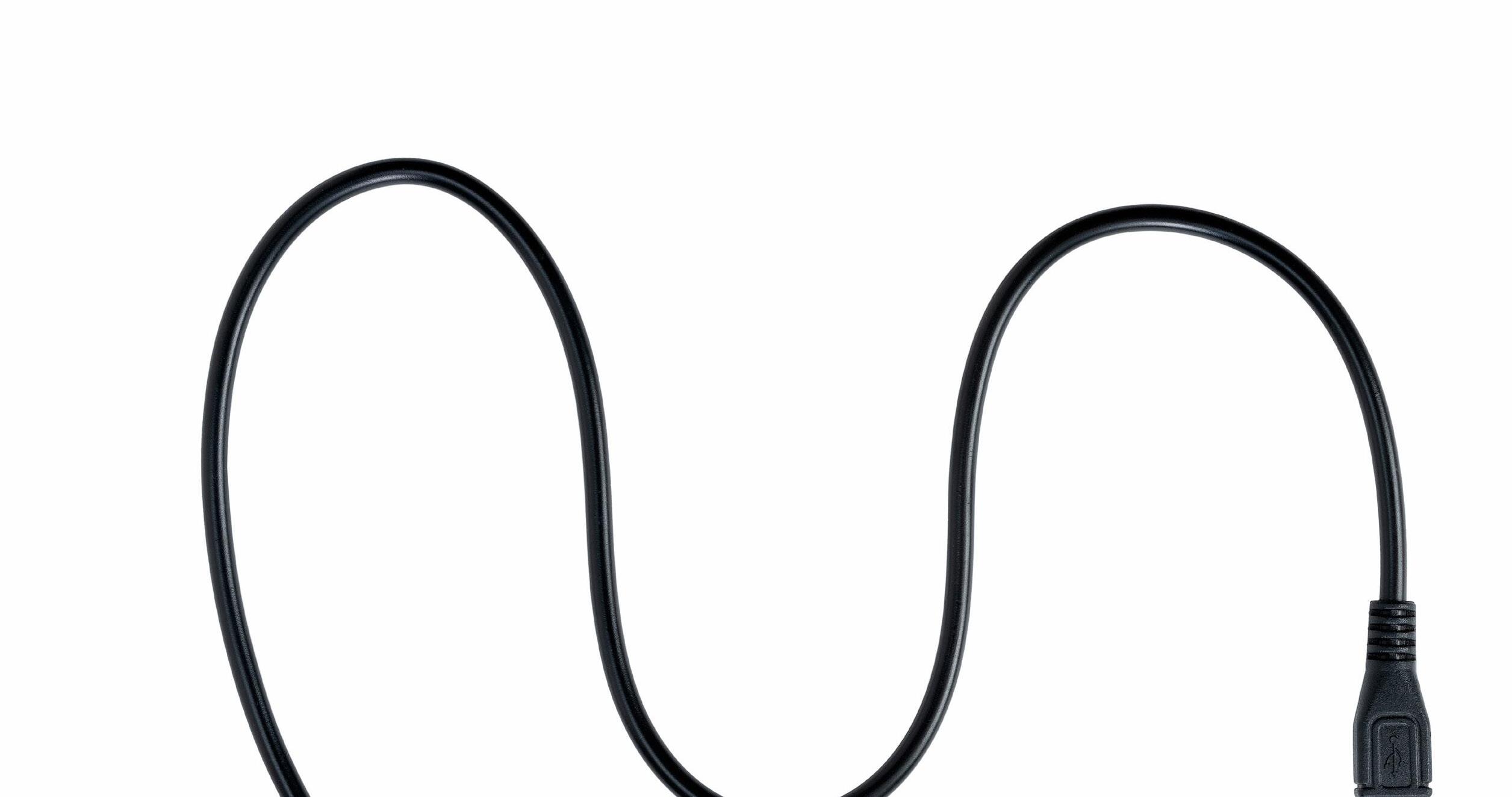
AK: My dad was always very interested in nature, and I spent a lot of time outside growing up. I was in Boy Scouts, and we went on long canoeing trips in Canada, which helped fuel my interest in the environment. I always had a feeling I wanted to do something that was good for the world. After watching An Inconvenient Truth, I knew this was what I wanted to do with my life.
AK: While working in Washington, D.C., after graduate school, I realized how polarized people can be on many issues, and how state-level politics – where decisions are made, and where productive work can be done – was where I wanted to be. So, I moved to Colorado and joined WRA as a flexible grid analyst. Even then, I always found myself drawn to electric vehicles. When I moved to my current role, I was excited to help shape where it was going, especially at a time when the world of zero-emissions vehicles was moving very quickly.
Aaron with his brown trout catch in Rocky Mountain National Park. Deborah hiking Sterling Pass in Coconino National Forest near Sedona, Arizona.What do you enjoy most about the work you do at WRA?
DK: I enjoy getting to dive into rate and program design to shape utility offerings that make real-world sense for EV drivers and all customers. The most exciting part of my job is seeing the progress utilities are making in creating more sophisticated and better-designed programs. Our influence and advocacy are working!
What has been the biggest win that you’ve been part of?
AK: I’m most proud of what we accomplished in 2023. We were able to help secure innovative legislation and utility policy. From getting legislation passed to create incentive programs for zero-emission trucks and buses in Nevada to getting the Advanced Clean Trucks and Advanced Clean Cars standards done in Colorado and New Mexico – all while continuing to get critical utility transportation electrification plans approved across the region. This will set us on an EV adoption curve that aligns with what science tells us is necessary to avert the worst impacts of climate change.
What makes you hopeful for the future?
DK: Knowing that a better world is possible!
I get excited when I think of a future where our transportation sector is powered by clean electricity and vehicles no longer have a huge greenhouse gas impact or emit harmful air pollutants.
What is next for your team?
AK: After the recent adoption of Clean Cars and Trucks standards in Colorado and New Mexico, we’ll be making sure there is sufficient policy support in place, like vehicle incentives and charging infrastructure, to ensure those ambitious EV adoption targets are met. That means passing state and utility incentives and leveraging federal funding opportunities available this year. I’m also interested in exploring new areas of policy where our states can lead the way, such as exploring how we can create a circular economy for electric vehicle batteries at the end of their lifespan.
DK: I’m looking forward to working on second-generation transportation electrification plans. Now that utilities in our region are going through the regulatory process again after implementing their first plans, we have data specific to their service territories on what is and isn’t working. Having that information means WRA can make more specific, tailored recommendations going forward and advocate for even better, more effective plans.
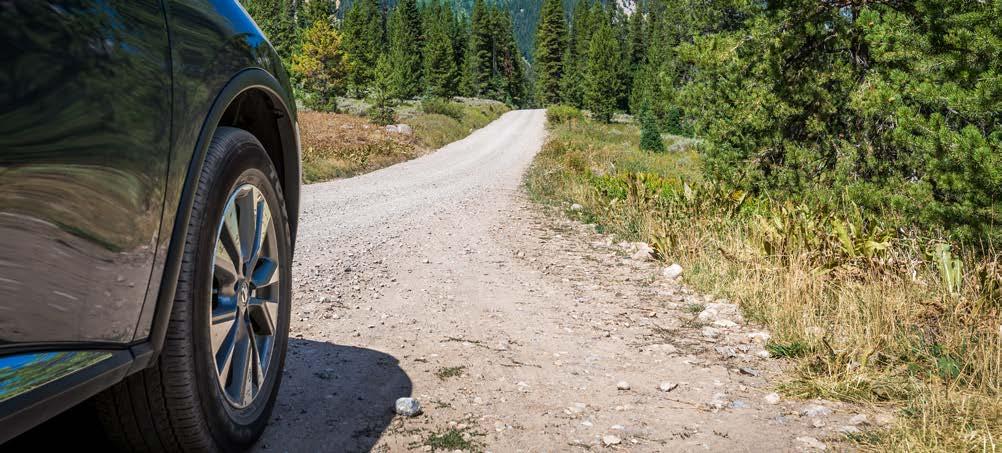


As 2023 ended, a notable win electrified the environmental landscape in New Mexico as the state celebrated the adoption of Clean Cars and Trucks standards. This triumph underscored the collaborative efforts of advocates and set the stage for a brighter climate future for New Mexico’s communities.
The story of this success didn’t unfold in isolation; it is built upon the progress of WRA’s previous win in Colorado, where a similar commitment to zero-emission vehicles was made.
Colorado’s Air Quality Control Commission unanimously approved the Colorado Clean Cars rule last October, and it mandates that 82% of new vehicles sold in the state must be zero-emission by 2032. Thanks to WRA’s advocacy, the commission is requiring a second rulemaking by 2029 for the later years of the rule, establishing a clear and legally enforceable pathway for Colorado to reach 100% zero-emission vehicle sales in 2035.
With Colorado on a path to clean transportation, WRA’s team harnessed the momentum to drive home a win in New Mexico too – an effort that was a long time in the making.
WRA helped formed the Climate Advocates Coalition in early 2022 and took the lead in pushing for these regulations in New Mexico. The coalition made it a priority to assemble diverse voices to speak to the need for these rules.
“We are a community of diverse faith traditions and spiritual perspectives seeking to care for our common home,” said Clara Sims, assistant executive director of New Mexico & El Paso Region Interfaith Power and Light. “It was wonderful to see that the strength of such diversity was reflected in our coalition and in our collective work toward the climate, health, and equity justice outcomes these clean vehicle standards address.”
The coalition began engaging with the New Mexico Environment Department to advocate for the adoption of the Advanced Clean Cars II (ACCII) and Advanced Clean Trucks (ACT) regulations, and the complementary
Heavy-Duty Low NOx Omnibus (HDO) standards. They also urged the governor to take prompt action in 2023.
As the dual hearings before the New Mexico Environmental Improvement Board and the Albuquerque-Bernalillo County Air Quality Control Board approached, WRA’s preparation was exhaustive. The team submitted detailed direct and rebuttal testimony, analyzing the impacts of adopting the regulations specific to New Mexico in terms of greenhouse gas reductions, air quality benefits, and a cost-benefit analysis. They meticulously responded to arguments made by opposing parties and assisted coalition attorneys in developing cross-examination questions.
The coalition faced its share of challenges, especially when contending with opposing auto dealers who presented misleading testimony without citations. WRA responded with a carefully crafted rebuttal, backed by thorough research and facts. The auto dealers even attempted to introduce new evidence during the hearings, but the coalition’s lawyers swiftly objected, ensuring a fair and evidence-based decision-making process.
The hearings themselves were a testament to the power of advocacy with 80 comments made in support of the proposed rules. Advocates played a crucial role in organizing these community voices.
“Our email campaign saw incredible engagement,” said Lynn Warren, WRA’s digital engagement specialist.
“This indicates to me that people in New Mexico are eager to take positive climate action, particularly around pollution and affordable, clean technology – through digital advocacy and physically showing up to give public comment.”
Dr. Paul Charlton, board chair of New Mexico Health Professionals for Climate Action, presented compelling testimony, highlighting the severe health impacts of fossil fuel use. His emotional presentation, coupled with

evidence from mainstream medical journals and his personal story of his young son suffering an asthma attack, underscored the urgency of addressing climate change and air pollution through transportation electrification.
“WRA’s guidance coordinating our data and stories around a shared, hopeful message to advance an issue that will benefit New Mexico and New Mexicans was key to these rules being adopted,” said Dr. Charlton.
Late into the evening of Nov. 16, 2023, the boards voted to adopt these critical standards, with the Environmental Improvement Board voting in support with a narrow 3–2 margin. As in Colorado, the rule included the requirement that 82% of new vehicles sold in the state by 2032 be zero-emission. The victory marked a significant milestone for WRA and the residents of New Mexico. The adoption of ACCII, ACT, and HDO regulations in a single hearing represented a monumental achievement (and the biggest state-level action a state can take). And for New Mexicans, this win means a future with more electric vehicle options, cleaner air, and a step toward achieving the state’s climate goals.
Many people start the new year with resolutions – a personal challenge, ambitious goal, or hopeful vision for the year ahead. At WRA, our resolutions take the form of our 2024 priorities. They are ambitious and challenging, but they are also full of hope. They represent our collective commitment to forging a path toward a healthier, more equitable, and sustainable future for the West.
At the forefront of WRA’s agenda is the Colorado River, a lifeline for countless ecosystems and wildlife habitats, the seven basin states, 30 federally recognized Tribes, and Mexico. Climate change and prolonged drought have put stress on the river and the communities and wildlife that depend on it. We need a fresh approach that uses data-backed solutions for river governance.
In 2023, the Department of the Interior kicked off the process for revising the guidelines for how Colorado River water is allocated. WRA’s team of experts is working on policies for responsible river management that promote resilience to climate change, are inclusive of all our communities, and create a collaborative, sustainable future for the Colorado River.
In the challenging political and regulatory landscape of Arizona, we are focused on getting the state’s three largest utility companies on track with the greenhouse gas emissions reduction targets needed to fight climate change. The goal is to align

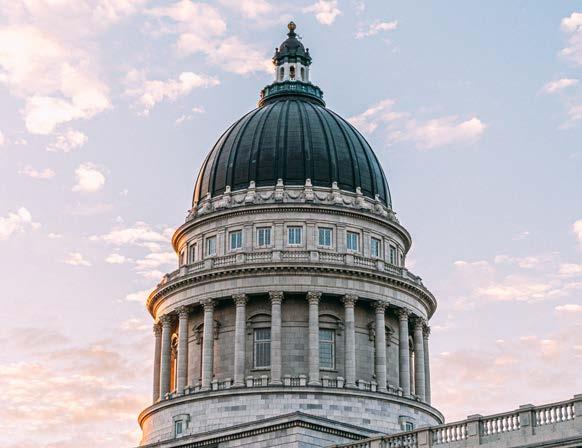
Arizona Public Service, Salt River Project, and Tucson Electric Power with more ambitious decarbonization goals that mirror climate science and create lasting impacts for Arizonans’ health and livelihoods. We must reduce greenhouse gas emissions at least 80% by 2030 to avert the worst impacts, and WRA sees 2024 as a window of opportunity to effect change.
Rapid development and habitat loss are threatening Colorado’s iconic landscapes and wildlife. Nearly one-third of Colorado’s lands have already been altered by human development – placing Colorado at the highest percentage of natural areas already lost to development among Western states. The seriousness of this threat has prompted WRA to advocate for a recurring source of conservation funding for the state.
We are exploring funding options to secure at least $50 million annually to fund the protection of Colorado’s remaining lands. This will also put us on our ultimate path to protecting 30% of lands by 2030 and 50% by 2050.
But WRA’s commitment to the region goes beyond these three organizational priorities. In each state, legislative priorities have been outlined to fight climate change and its impacts.
When it comes to legislative efforts, WRA focuses on initiatives that promise significant environmental impact, demand timely
intervention, and hold a viable chance of success in the ever-evolving legislative landscape.
In Colorado, our work to create a reliable revenue stream for necessary investments in land and wildlife conservation previously described will also be a priority at the legislature this year with a proposed bill to support conservation funding. Beyond that, our team is leading efforts on a renewable energy siting bill that will help Colorado expand the deployment of utility-scale clean energy projects (like wind and solar) – all while ensuring this build-out does not exacerbate habitat loss or place development on important natural and working lands. A smart energy siting policy means Colorado can meet its climate and renewable energy goals and protect wildlife conservation and community values.
WRA is also advocating for increased funding for the Turf Replacement Program, a critical step in Colorado’s water conservation efforts. WRA helped establish the program through legislation passed in 2022, creating a fund for replacing turf (water-intensive grass) with water-wise landscaping and established a statewide program for Coloradans who don’t have access to local incentives. We want to secure an additional $3 million to amplify the impact of this program and reach communities statewide.
establishing this fund during the 2023 legislative session to support existing state programs that prioritize land and water conservation. This year, we are advocating for $300 million to ensure the Legacy Fund reaches its full potential to produce enough annual returns to be self-sustaining, weather economic downturns, access hundreds of millions of federal matching dollars, and reach all 33 counties and Tribal communities. This will help ensure New Mexico communities have stable funding to protect them from wildfire, flood and drought, safeguard water supplies, support rural and agricultural communities, and grow the state’s outdoor recreation economy.
Our team is also actively involved in advancing an electric vehicle tax credit bill, which will help ensure all New Mexicans can access electric vehicles and promote the transition to cleaner transportation alternatives.
In Utah, WRA is championing incentives for zero-emission medium- and heavy-duty (MHD) vehicles. MHD trucks make up a smaller portion of the total vehicle fleet, but these vehicles emit the most carbon dioxide and ozone-forming emissions per vehicle. By encouraging vehicle electrification, we can significantly improve local air quality and reduce the impacts of climate change. Incentive programs are a key component to catalyzing this burgeoning market.

